PetSafe® Elite Little Dog In-Ground Fence™ Install
Table of Contents
Welcome
Welcome to your new PetSafe® In-Ground Fence™
A Few Things to Keep In Mind:
Installing the wired fence system takes 1 to 2 days.
A minimum of 14 days of training is recommended.
Environmental factors in the yard, such as metal sheds or utility wires, may effect the fence signal.
We recommend calling to have utility lines marked prior to installation to avoid damage to existing lines.
Visit call811.com for contact information on marking utility lines at your home.
Step 1: Plan Out the Fence
Planning out the fence area prior to setting it up will help make the install process easier. For assistance, use the fence planning tool.
A Few Things To Keep in Mind
The boundary wire needs to be a complete loop. One end of the wire begins in the base unit terminal. Once the fence is laid out in the yard, the other end of the wire plugs into the second terminal on the base unit.
Have your utilities marked. When placing the fence wire, it’s important to have your utility lines marked to avoid damage and signal interference.
Draw rounded corners. In order to maintain a consistent signal avoid creating 90 degree corners. The fence planning tool does not have rounded corners when the fence is drawn; this is very important when laying the wire.
If your neighbor has an in-ground fence as well, make sure there is 5-10 feet between both fences.
Single Loop Layouts

Single loop layouts are best to contain your dog in both the front and back yard.

Twisted wire cancels out the radio signal and allows your pet to cross without receiving a static stimulation. To cancel the signal in the wire, two pieces of the wire must be twisted together 10-12 times per foot.

When containing a specific area, such as a pool or garden within the yard, twist wire between the main fence wire and the contained area within the yard.

When containing the front and back yards separately, create a loop on either side of the home, using the home as a barrier. Ensure that there is at least five feet between the parallel wires.

Running the wire around an existing fence creates an additional barrier that helps keep your dog safely in the yard.
Double loop layouts

Double loop layouts are best to contain your dog in the front or backyard only. This layout is also works well when combining the in-ground fence with an existing fence.

If there is an area near the boundary that your dog should be kept away from, include this area within the boundary wire.

If the yard already has a fence and only one side needs a boundary, a double loop layout is needed.
Utility Wires
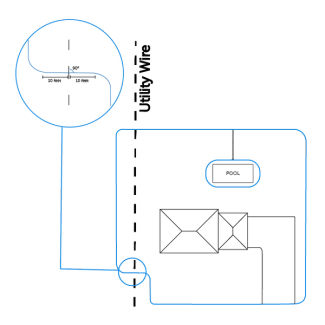
Utility wires can interfere with the signal. If crossing utility wires is necessary, the wire must cross at a 90 degree angle to avoid interference.
Step 2: Prepare the System
Materials
Please have the following contents ready for set up:

Base unit

Collar
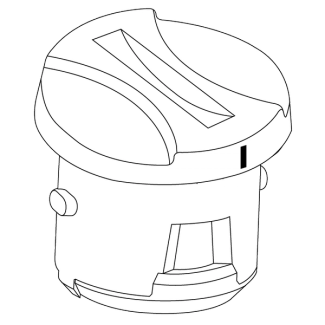
RFA-188 battery
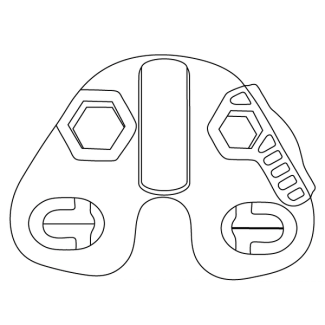
Test light tool

Surge protector
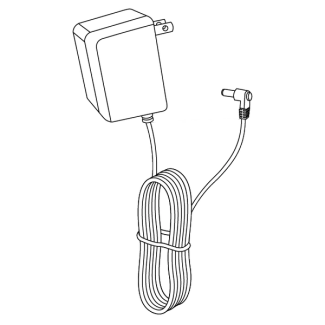
Power adapter
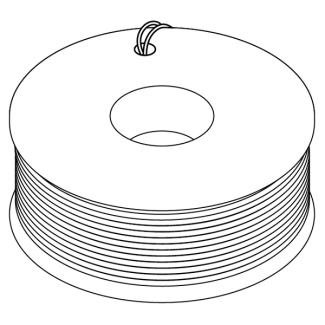
Wire

Flags
Tools
These additional tools may also help with the setup process:

Power drill

Wire stripping pliers

Shovel or lawn edger
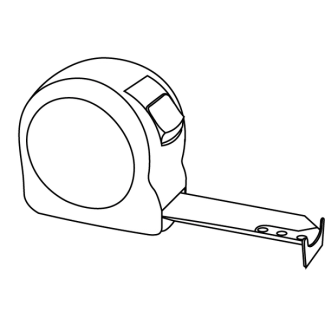
Tape measure

Circular saw

Phillips screwdriver

Silicone caulk
Collar
To turn the collar on, insert the battery by following the steps below.

Use the key on the test light tool to install the battery.
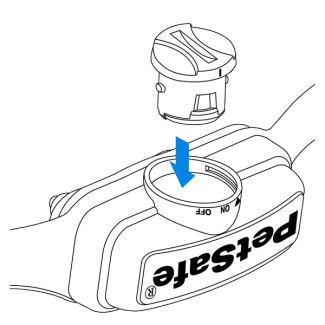
Insert the battery and line the ▲ on the collar up with the ▼ on the battery.
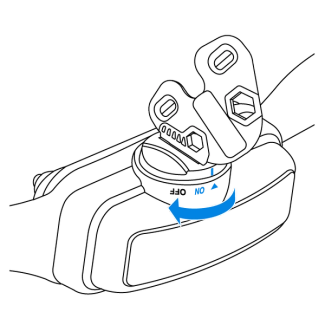
Use the test light tool to turn the battery to the [ lock ].

To turn the collar off, turn the battery to the OFF position.
Important: When the battery is low, the light on the collar flashes red once every 20 seconds.
Collar Level
Follow these steps to learn how to set the collar level.
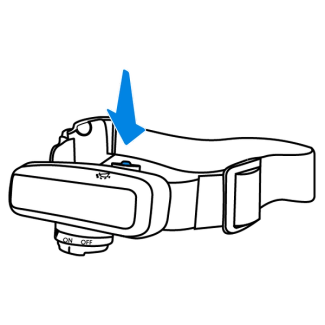
Hold the button to see a solid light, then release. The number of flashes represents the level.

Press again quickly to increase the level.
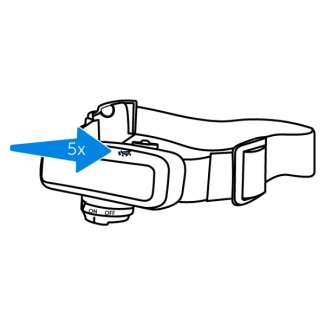
Set the collar to level 5 to create the brightest light on the test light tool during testing.
If the collar does not light up when pressing the mode button, contact our Customer Care Team.
Step 3: Install the Fence
Base Unit Location
Place the base unit in an environment that is:
Weatherproof and temperature controlled
Keep the base unit at least 3 feet from large metal objects.
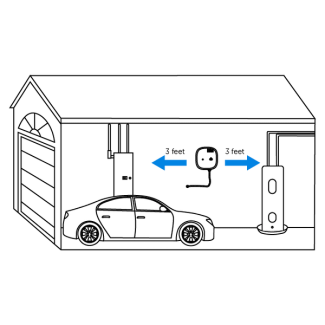
Important: Leave the base unit unplugged until it is time to test the layout.
Install the Surge Protector
Turn the power off to the standard electrical outlet at the breaker when installing the surge protector.
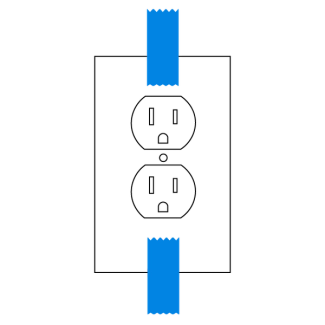
Tape the outlet cover to the wall to prevent it from falling during installation. Then unscrew the cover.
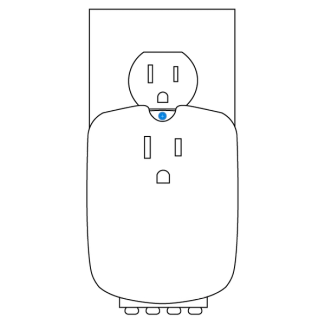
Plug the surge protector into the lower outlet and screw the protector into the outlet cover.

Cut two wires long enough to connect the base unit to the surge protector.

Insert and twist wires from the base unit terminals and insert the other ends of the wires into the black terminals on the surge protector.
Make sure your wire has 10-12 twists per foot to cancel the signal.
Layout the Wire

Place the wire on top of the ground to test the layout before burying. Have the pre-planned layout from step 1 available to follow when laying out the wire.
Test the Layout
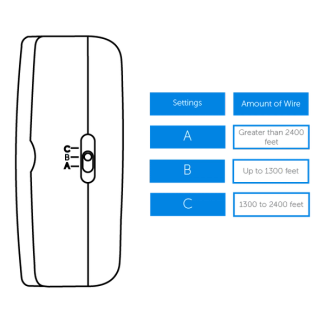
Set the base unit according to the amount of wire used in the layout.
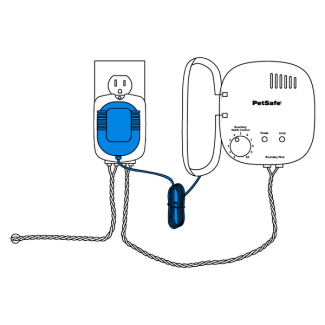
Twist the wires to cancel the signal before plugging them into the red terminals on the surge protector. Plug the power adapter into the base unit.
Test the System
Follow these instructions to ensure the system is working properly.

Hold the collar probes against the wire on the test light tool.

Position the collar under the tool and hold at the height of your pet.

Walk toward the wire until the collar beeps and the tool flashes.

Test over twisted wire to ensure no activation from the collar.
Important: Set the collar back to level 1 when training begins.
Set the Boundary Dial
The boundary dial determines the distance from the wire where the correction begins and ends.

Test different boundary levels to find the best distance that works for the yard.
Step 4: Bury the Wire
After testing the system, follow the instructions below to bury the wire.
Important: Disconnect the wire from the base unit before burying.
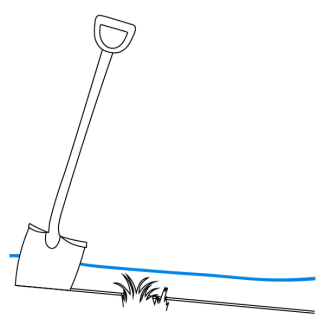
Dig a narrow trench 1-3 inches deep. The trench only needs to be as wide as the wire.

Place the wire loosely into the trench to allow the wire to expand with temperature changes.
Note: A paint stick can be used to press the wire into a narrow trench.
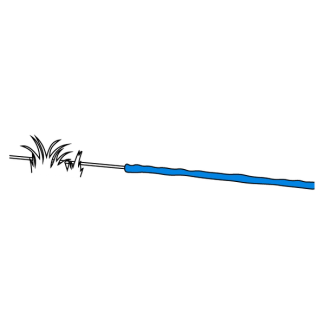
Cover the trench using excess dirt.
Important: If the ground is rough or rocky, consider installing the wire in a protective tube, such as a garden hose or PVC pipe.
Attach to a Fence
The boundary wire can only be attached to a wooden or chain link fence. When laying a double loop, ensure the wires are at least 5 feet apart.
Wooden Fence
Use fence staples to attach the boundary wire to the fence. Avoid driving the staple in all the way and damaging the insulation on the wire.

Single loop
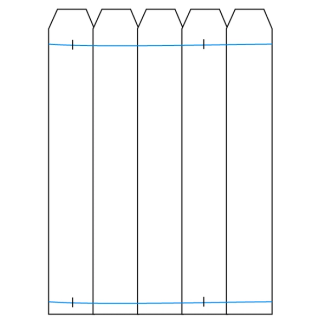
Double loop
Chain Link Fence
Weave the boundary wire through the fence to secure it in place. Zip ties can also be used, but make sure to leave extra space to avoid damaging the insulation on the wire.
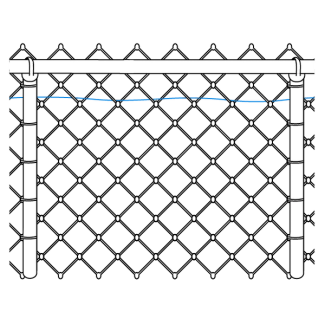
Single loop

Double loop
Gates
Bury the boundary wire in the ground to cross gate openings.

Single loop
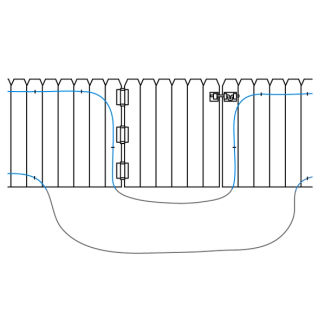
Double loop
Crossing a Hard Surface
If the wire needs to cross a hard surface, such as a driveway or sidewalk, follow the instructions below.
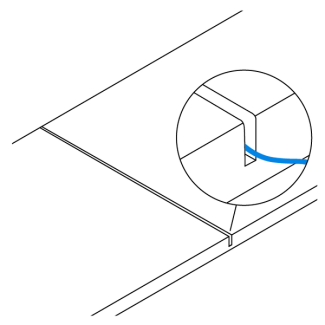
If there is an existing expansion joint, use a blunt tool, such as a wooden paint stick, to clean debris out, then run the wire through it.
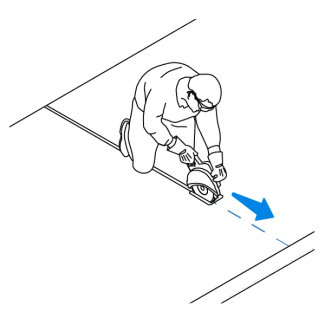
If there is no expansion joint, use a circular saw to cut a path, then run the wire through it.

Cover the path in the driveway with a waterproof compound, such as silicone caulk, to protect the wire from damage.
Gravel Driveway

The boundary wire can be run through PVC or rubber hosing underneath a gravel driveway. Do not place in metal as it will interfere with the signal.
Place the Boundary Flags

Walk toward the boundary until the collar beeps and the tool flashes.

Place a flag where the collar starts to beep. Then step back.

Continue to walk out to the boundary, placing flags 5-10 ft apart.
Step 5: Fit the Collar
The collar must be fit properly to work. To make sure the fit is correct, turn the collar off and follow these steps:

Tighten the probes using the wrench until resistance is felt.
Important: Periodically check the tightness of the probes to keep the collar secure.
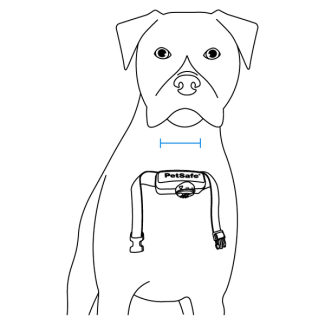
With your pet standing, center the probes on the neck.

Adjust the strap until the collar is snug.
Important: Both probes must be touching skin for static stimulation to be felt.

Put the collar on your pet and ensure only one finger fits between the probe and your pet’s neck.
Important: Refrain from using the collar longer than 12 hours to avoid irritation.
Trim the Collar

If the strap is too long for your pet, follow the instructions below to trim the excess. The above materials will be needed to begin.
Important: Leave extra room on the strap if your pet is young or grows a thick winter coat.

Mark the strap at least 2 inches past the slide buckle.

Remove the collar from your pet and trim the strap.
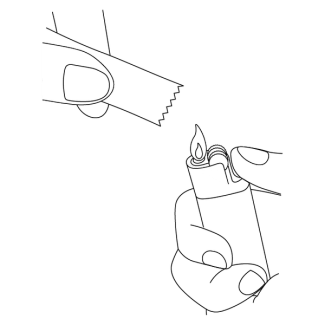
Apply a flame to seal the cut edge.
Prevention Features
Anti-Linger Prevention
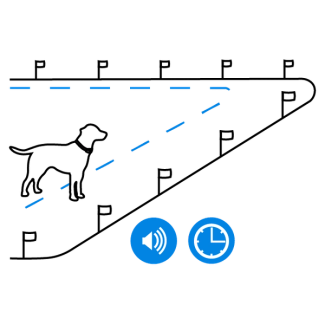
This feature helps prevent your dog from staying in the warning zone for too long and draining the battery. If he does not leave the warning zone within two seconds of hearing the tone, a continuous static stimulation begins until he returns to the pet area.
Run-Through Prevention
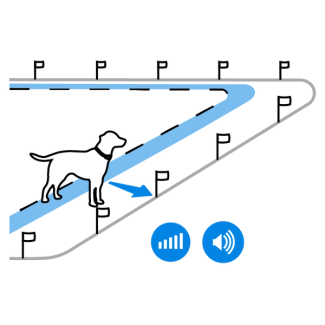
This feature helps stop your dog from running through the boundary zone by increasing the static stimulation level as he approaches the boundary wire. The collar automatically increases the static stimulation level and emits an intermittent tone when he gets 40% of the way through the boundary zone. The static stimulation continues to increase as your dog remains in the zone.
Over-Correction Prevention
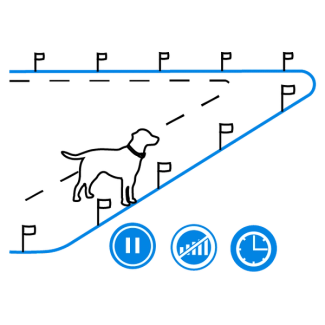
This feature stops the static stimulation after 15 seconds if your dog stays in the boundary zone. A green light appears on the collar after the static stimulation stops for 10 seconds. After returning to the pet area for 15 seconds, the collar will again respond on the boundary.
Next Up: Train Your Pet
Training is essential so your dog becomes familiar with the pet area. Training will cover collar settings, boundary awareness, distractions and eventually, off leash in the pet area.
A Few Things To Keep in Mind
Sessions will last 10-15 minutes each, 3 times a day.
A minimum of 14 days of training is recommended.
Spend at least 5 minutes of play time at the end of each training session.
The first battery may drain faster due to repeated activation during training.
Contact Customer Care
If you need further assistance, please contact our customer care team.